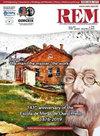Effect of inorganic and organic depressants on the cationic flotation and surface charge of rhodonite-rhodochrosite
Q3 Earth and Planetary Sciences
引用次数: 5
Abstract
Silicates (rhodonite, tephroite, spessartine) and the carbonate (rhodochrosite) of manganese are of economic interest in silicate-carbonated manganese ores. The recovery of both mineral classes by flotation constitutes a challenge; rhodochrosite is a slightly soluble mineral that can release Mn2+ ions in pulp. In this work, the effects of inorganic and organic depressants on the cationic flotation at pH 10 with ether amine acetate and the surface charges of rhodonite and rhodochrosite have been investigated. For rhodonite, the influence of Mn2+ species on its recovery and surface charge at the conditions of maximum yield with amine has also been investigated. The organic depressants, especially the corn starch, were more effective depressants for both minerals. The poor recovery of rhodonite conditioned with MnCl2 is probably related to the colloidal Mn(OH)2 deposition on mineral surface. The increase in the rhodochrosite recovery with increasing water glass content is probably related to its negative value of species adsorbed on the mineral surface, since the rhodochrosite zeta potential, conditioned with this reagent, becomes more negative compared with the mineral without reagent, which attracts the ether ammonium.无机和有机抑制剂对菱铁矿阳离子浮选和表面电荷的影响
硅酸盐(菱铁矿、铁辉石、铁辉石)和锰的碳酸盐(菱铁矿)在硅酸盐碳酸锰矿中具有经济价值。通过浮选回收这两类矿物是一个挑战;红锰矿是一种微可溶性矿物,能在矿浆中释放Mn2+离子。本文研究了无机和有机抑制剂对pH值为10的醋酸醚胺阳离子浮选的影响,以及对红锰矿和红锰矿表面电荷的影响。对于菱铁矿,也研究了锰离子种类对其回收率和最大产率条件下表面电荷的影响。有机抑制剂,尤其是玉米淀粉,对这两种矿物质都是更有效的抑制剂。在MnCl2条件下,rhodonite的回收率较低,可能与矿物表面的胶体Mn(OH)2沉积有关。随着水玻璃含量的增加,红锰矿回收率的增加可能与其在矿物表面吸附的物种的负值有关,因为在该试剂的条件下,红锰矿的zeta电位比没有试剂的矿物更负,从而吸引醚铵。
本文章由计算机程序翻译,如有差异,请以英文原文为准。
求助全文
约1分钟内获得全文
求助全文
来源期刊

Rem-Revista Escola De Minas
工程技术-工程:土木
自引率
0.00%
发文量
0
审稿时长
6-12 weeks
期刊介绍:
REM – International Engineering Journal (antigua REM – Revista Escola de Minas) es la primera revista técnica de Sudamérica. Fue fundada en enero de 1936 por los estudiantes de la Escuela de Minas de Ouro Preto y desde entonces se ha especializado en la publicación de artículos en las áreas de la Ingeniería Civil, Geología, Metalurgia y Materiales y, Minería y Mecánica y Energía.
Su objetivo es servir como un medio de publicación para los trabajos técnicos y científicos originales de investigadores nacionales y extranjeros en esas áreas. Contribuciones originales (artículos y cartas) son aceptadas. Artículos de revisión dependen de la invitación y/o análisis de los Editores.
El envío de artículos para su publicación implica que el trabajo no ha sido publicado previamente, que no está siendo presentado para su publicación en otra revista y no se publicará en otro lugar, en la misma forma, sin el permiso, por escrito, de los Editores/Autores.
 求助内容:
求助内容: 应助结果提醒方式:
应助结果提醒方式:


